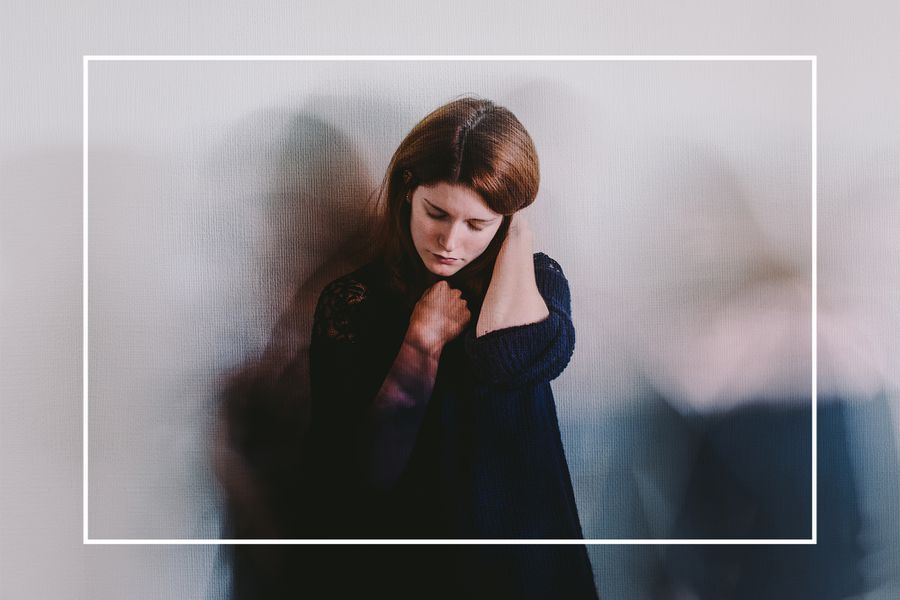
Maybe you’ve been told “you don’t look depressed” despite feeling low for months. Or perhaps you’ve been excelling at work but also isolating yourself both in and out of the office because you just don’t feel like being around people. Whatever the case may be, high-functioning depression is a very real — and, according to the thousands of Instagram posts, very common — mental health challenge.
It's important to note that while there is a lot of overlap between high-functioning depression and PDD, someone with a diagnosis of MDD can actually also experience high-functioning depression. "High-functioning depression can be the terminology used to describe someone who has major depressive disorder in remission or recurrent MDD," says Schwartz. "Someone who experiences recurrent MDD may find that, between depressive episodes, they are still depressed yet the depression is less debilitating or noticeable — this is what some are now calling 'high-functioning depression.'"
Signs and Symptoms of High-Functioning Depression
Because high-functioning depression isn't an official diagnosis and every individual is different, the signs and symptoms of it can vary greatly from person to person. That being said, they're largely the same as those associated with MDD; the difference mostly lies in how many you're experiencing at once and their intensity. "A diagnosis of moderate to severe MDD requires the presence of at least five symptoms," says Dr. Snyder. "Mild depression [such as PDD] requires the presence of two to four symptoms, including hopelessness, for more days than not for at least two years. Hopelessness is not a core symptom of MDD, but must be present for a diagnosis of PDD."
With that in mind, below are some of the symptoms of high-functioning depression, according to the experts:
Emotional Symptoms of High-Functioning Anxiety:
Physical Symptoms of High-Functioning Anxiety:
Treatment for High-Functioning Depression
If you're experiencing high-functioning depression, know that help is available and there are many steps you can take to get better.
Try Therapy
If you’ve been suffering for a while, therapy — in various forms — is often a top recommendation for treatment. “Behavioral activation and cognitive behavioral therapy (CBT) are two effective evidence-based treatments, which can be used either separately or in tandem,” says Schwartz. “Behavioral activation is based on an understanding that depression keeps you from doing things that bring you enjoyment, and that it can be treated by reversing this cycle by purposefully scheduling enjoyable and meaningful activities. CBT for depression works to modify thought patterns in order to change one’s mood and behavior.” (Want to understand more? Read about CBT, check out mental health apps, or look into telemedicine.)
Other therapeutic methodologies for treating high-functioning depression include psychodynamic therapy and EDMR, says Dr. Snyder. The former focuses on the “psychological roots of emotional suffering” to promote self-reflection and self-examination; and the latter encourages the patient to concentrate on a trauma memory as they experience a series of side-to-side eye movements, which is associated with reduced vividness and emotion of the memories, according to the American Psychological Association (APA).
Make Some Changes — for the Better
Although you can and should ask for external help to ease high-functioning depression, there are also things you can do yourself in order to get better. “Exercise, meditation, good nutrition, self-care, getting quality sleep, interacting socially with people who you care about, and journaling are all examples of beneficial lifestyle changes that you can apply,” says Lombardo.
In general, these practices can "help with depression because they increase the depressed person's contact with activities that are positively rewarding and help them increase awareness of how their behavior affects their mood," explains Schwartz. "Someone experiencing depression can't possibly experience the benefits of socializing if they are isolating 24/7. If they make a lifestyle change that involves calling a friend [once a] day and it even only slightly improves their mood, this is information for the brain that behavior change = mood change."
Work On Shifting Your Mindset
When you have depression, hopelessness can be a self-fulfilling prophecy, i.e. the more depressed you feel, the more hopeless you may become about potentially recovering, and the more hopeless you are, the more depressed you'll feel. But you can break the cycle. Embracing hope that things can get better and feeling empowered that you can make a difference in your mental health can be "vital to help someone with high-functioning depression get better," says Lombardo.
Of course, simply telling yourself to change your mindset probably won’t get you very far, but practicing shifting your thoughts over time — think: gradually — very well might. It may feel uncomfortable at first but will become more of a habit as you get used to it. While there are a variety of methods to “move toward” a better mindset, “one way is by reframing judgmental or ruminative thoughts as factual and nonjudgmental statements,” says Schwartz. “For example, you could reframe, ‘No one ever wants to spend time with me’ to ‘I haven’t spoken to any friends in four days.’ The more these reframes are practiced, the more second-nature they become.” (Up next: What Is High-Functioning Anxiety?)






































